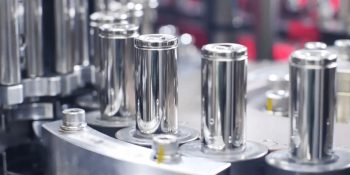
Tesla’s upcoming battery chemistry change is a double-edged sword
We don’t cover a lot of automotive news here on Phandroid, but when Tesla decides to make a dramatic shift in the battery chemistry it uses in its electric vehicles, there’s the possibility of larger implications to the entire lithium battery industry.
Tesla is working on changing the battery chemistry of all its standard-range electric vehicles from NCM (nickel, cobalt, manganese) to LFP (lithium, iron, phosphate) as a cost-saving measure. This change would allow Tesla to increase its profits on each standard-range vehicle it sells, but also reduce the sporadic price changes the company announces every few months which are affected by the constant fluctuation of the rare nickel and cobalt metals that are used in its current NCM batteries.
Xiaomi expects to launch its first EV in the first half of 2024
Tesla is already using LFP batteries in its standard-range vehicles the company manufactures in China.
The reason the battery chemistry change is only being applied the Tesla’s standard-range vehicles is that LFP batteries have a lower energy density when compared to NCM batteries. The chemistry change would increase the weight of Tesla vehicles if the company decides to maintain the current range.
While this may seem like a step in the wrong direction, LFP batteries do have one big advantage. NCM cells have a charge cycle lifespan of 2000 charges before battery degradation only allows them to charge to 80% of their original capacity. If a Teslas with NCM batteries is fully discharged and charged every day, that point would be reached within 5.5 years. On the other hand, LFP batteries deliver 3500 complete charge cycles before hitting that 80% capacity limit or 9.5 years if the battery’s full capacity was used daily.
That’s a 75% increase to the life cycle of the battery which means you won’t be noticing that slow range decrease in your Tesla quite as much.
Since Tesla is one of the biggest NCM battery producers, consumers on the globe, the switch to LFP batteries will free up the supply of nickel, cobalt, and manganese used by the electronics sector for the batteries we use in our smartphones, smartwatches and other smaller gadgets. The switch could possibly drive down the prices of NCM batteries which could have a small impact on the prices we pay for tech. Due to their higher energy density, NCM batteries are the ideal chemistry for the tech segment since users are always looking to get as much battery life as possible without compromising on size.
Source: CNBC